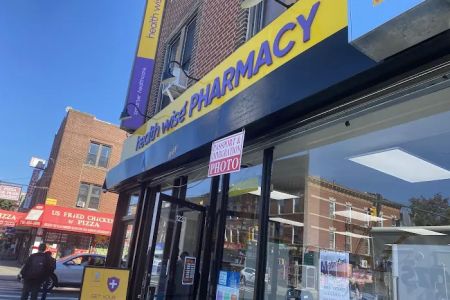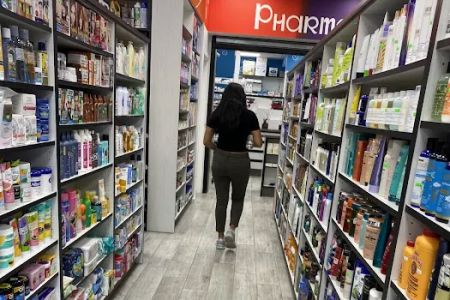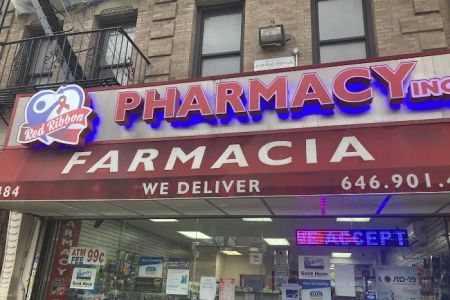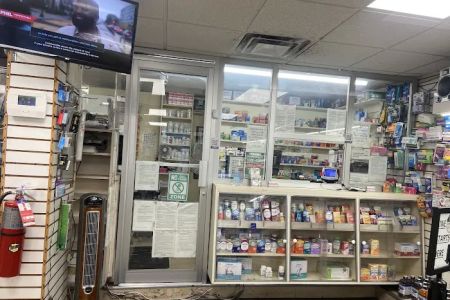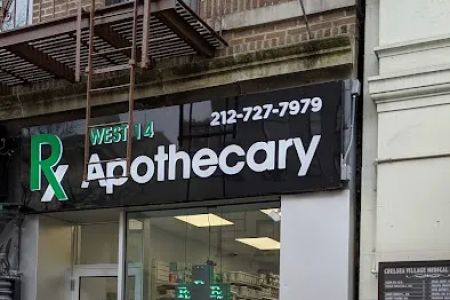Pharmacy Initiatives for Promoting Medication Safety: Ensuring Safer Use of Medications
As someone who has relied on medication for various health conditions over the years, I’ve come to appreciate the role pharmacies play in ensuring that we use our medications safely. Whether it’s picking up a prescription for a cold or managing a chronic condition, the right medication can make a world of difference. However, taking medication safely involves more than just following a prescription; it requires vigilance, education, and support from pharmacies to ensure the best outcomes. In my experience, I’ve seen firsthand how pharmacy initiatives for promoting medication safety can make a huge impact on our health, and I’m excited to share this knowledge with others.
Medication safety is a growing concern in the healthcare industry, with thousands of people in the United States affected by medication errors each year. These errors can range from taking the wrong dosage to mixing medications that shouldn’t be combined. Fortunately, pharmacies across the country are taking active steps to address these issues. They’re not just dispensing medications—they’re becoming key players in ensuring that patients are educated, informed, and supported throughout their treatment. In this article, I’ll explore some of the top pharmacy initiatives aimed at promoting medication safety and why they are so crucial for the well-being of individuals and communities.
1. Medication Therapy Management (MTM)
One of the most effective initiatives I’ve come across in my own pharmacy visits is Medication Therapy Management (MTM). MTM is a service where pharmacists work directly with patients to review their medications and help manage their overall treatment plan. I’ve personally benefited from MTM services during my visits to the pharmacy, and it’s an initiative that I believe is truly making a difference in patient safety.
1.1 What is Medication Therapy Management?
MTM involves pharmacists offering personalized counseling to patients, where they review all of the medications a patient is taking, including prescription drugs, over-the-counter medications, and even herbal supplements. The goal is to identify any potential risks such as drug interactions, incorrect dosages, or medications that may not be necessary anymore. Through MTM, pharmacists ensure that patients are taking the right medications for their health conditions and that they understand how to use them properly.
1.2 Benefits of MTM
During my own MTM session, the pharmacist was able to point out several drug interactions I wasn’t aware of, which helped me avoid potential side effects. MTM can also help reduce the risk of adverse drug events, which are common causes of hospitalizations. By reviewing medications on a regular basis, MTM also helps patients manage chronic conditions better, leading to improved health outcomes. This service is especially beneficial for people who take multiple medications and need extra support in managing their treatment.
1.3 How Pharmacies Implement MTM
Pharmacies offering MTM services often set up one-on-one meetings between the pharmacist and the patient. Some pharmacies offer MTM as part of their standard services, while others may require an appointment. During these sessions, the pharmacist will discuss your medical history, current medications, and any concerns you may have. They may also provide medication synchronization services, where prescriptions are refilled at the same time, reducing the chances of missing doses or running out of medication.
2. Prescription Drug Monitoring Programs (PDMP)
Another key initiative that has been gaining traction in pharmacies across the U.S. is Prescription Drug Monitoring Programs (PDMP). These state-run programs allow pharmacies to track patients’ medication histories, helping to prevent prescription drug abuse and misuse. I’ve seen the positive impact of PDMP firsthand, especially in reducing opioid misuse in my community.
2.1 How PDMP Works
PDMPs are databases that collect and store information about controlled substances prescribed to patients. When I fill a prescription for a medication that’s classified as controlled, the pharmacy checks the PDMP to ensure that I haven’t received prescriptions for the same medication from other providers. This helps reduce “doctor shopping,” where individuals visit multiple doctors to obtain prescriptions for controlled substances.
2.2 The Role of Pharmacists in PDMP
Pharmacists play an important role in PDMPs by reviewing the data and looking for red flags. For example, if a patient is frequently filling prescriptions for high-risk medications, the pharmacist can intervene by offering counseling or contacting the prescribing doctor to ensure the treatment plan is safe. By working together with other healthcare professionals, pharmacists help prevent prescription drug misuse and promote safer medication use across communities.
2.3 The Impact of PDMP on Medication Safety
PDMPs have been shown to reduce prescription drug abuse and help healthcare providers make more informed decisions about prescribing medications. In addition to reducing the risk of misuse, these programs also help identify patients who may need additional support for managing their medications or medical conditions. In my own experience, I’ve felt more confident knowing that the pharmacy is actively monitoring my medication use, ensuring that I’m taking medications safely.
3. Patient Education and Counseling
In my journey toward better medication safety, one of the most valuable services I’ve received from pharmacies is patient education and counseling. A well-informed patient is less likely to make mistakes when it comes to taking medications, and pharmacies are stepping up to provide patients with the knowledge they need to stay safe.
3.1 How Pharmacies Educate Patients
Pharmacies provide education through a variety of methods, from one-on-one consultations to written materials and online resources. I’ve always found it helpful when the pharmacist explains the potential side effects of a medication or how to take it correctly. Many pharmacies also offer medication guides and tip sheets that provide detailed instructions on how to manage medications, what to do in case of missed doses, and what side effects to watch for.
3.2 Providing Counseling for Special Populations
Pharmacists often provide additional counseling for special populations, such as the elderly, individuals with chronic illnesses, or those managing multiple medications. During one of my visits, the pharmacist took extra time to explain how to use my new inhaler correctly and discussed possible interactions with other medications I was taking. These conversations ensure that patients don’t just leave with their prescriptions, but also with the knowledge they need to use their medications safely and effectively.
3.3 Leveraging Technology for Education
Many pharmacies are now using technology to further educate patients. Some pharmacies have apps or websites where patients can access detailed medication information, ask questions, and even schedule consultations with a pharmacist. In addition, some pharmacies offer video consultations for patients who may not be able to visit in person. This digital shift has made it easier for patients to get the information they need to manage their medications properly, no matter where they are.
4. Medication Error Prevention Initiatives
Medication errors can have serious consequences, but pharmacies are doing a great job of minimizing these risks through various prevention initiatives. From double-checking prescriptions to using barcoding systems, pharmacies are implementing safety measures that reduce the chances of medication errors.
4.1 Double-Checking Prescriptions
One of the first safety measures I noticed during my pharmacy visits was the practice of double-checking prescriptions. Pharmacists often cross-reference prescriptions against patient records to ensure that there are no discrepancies, such as a prescription for a drug that may conflict with another medication I’m taking. This process adds an extra layer of protection to prevent errors.
4.2 Barcoding and Technology
Many pharmacies have adopted barcoding systems, where medications are scanned before they are dispensed to ensure accuracy. I’ve personally witnessed the pharmacist scanning my prescription before handing it over, which ensures I’m receiving the correct medication. These technological advancements are reducing human error and improving medication safety for everyone.
4.3 Continuous Improvement and Training
Pharmacies are continuously improving their error prevention practices by offering regular training to their staff. Pharmacists stay updated on the latest safety protocols and medication management techniques, which further enhances their ability to catch potential errors before they happen. For patients like me, knowing that the pharmacy staff is well-trained and committed to safety provides peace of mind.
Through these initiatives, pharmacies play a pivotal role in promoting medication safety and ensuring that patients like me can use medications effectively and safely. Whether it’s through Medication Therapy Management, Prescription Drug Monitoring Programs, or patient education, pharmacies are working tirelessly to improve healthcare outcomes and prevent medication errors. To learn more about how pharmacies are enhancing medication safety, visit Pharmacy for further information and resources.









